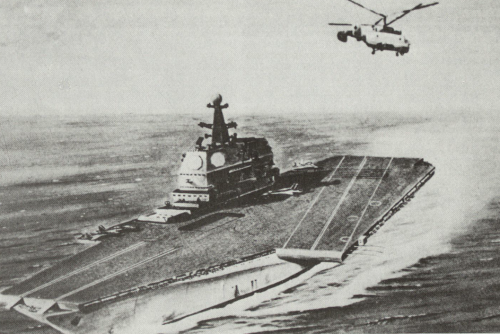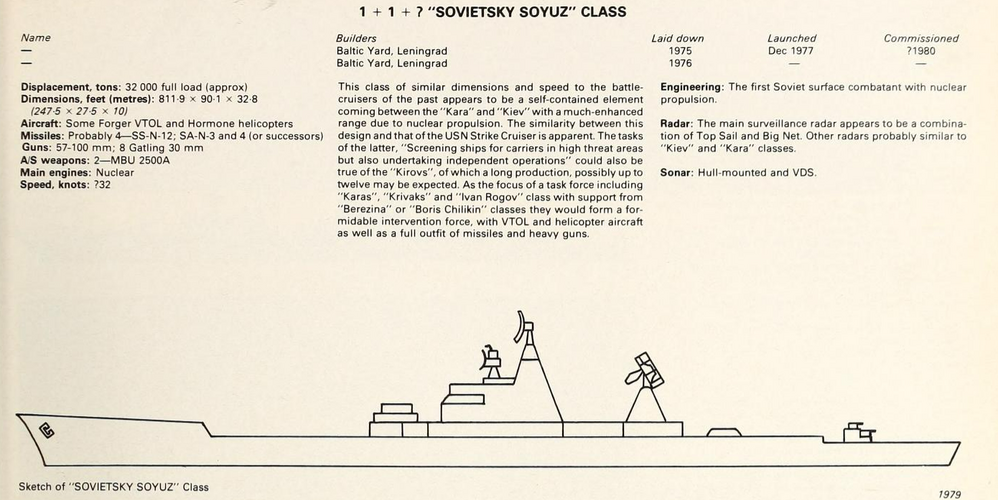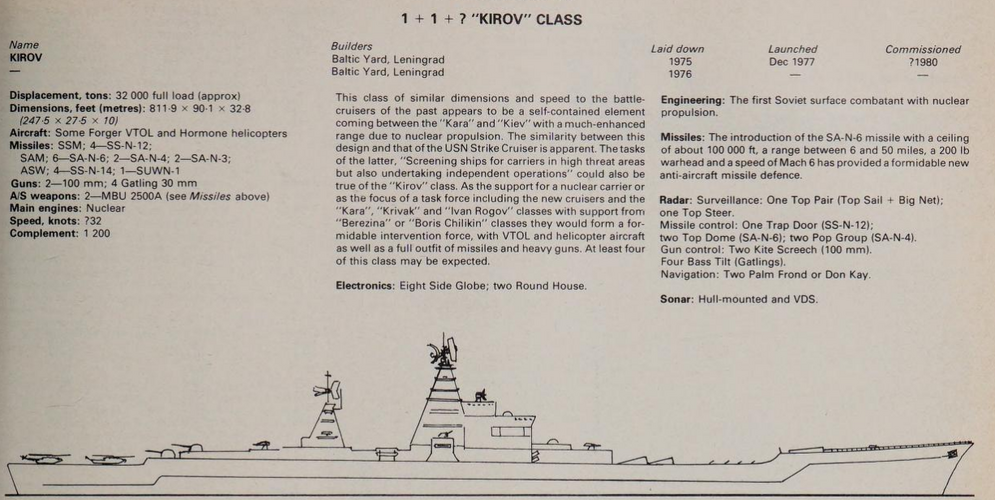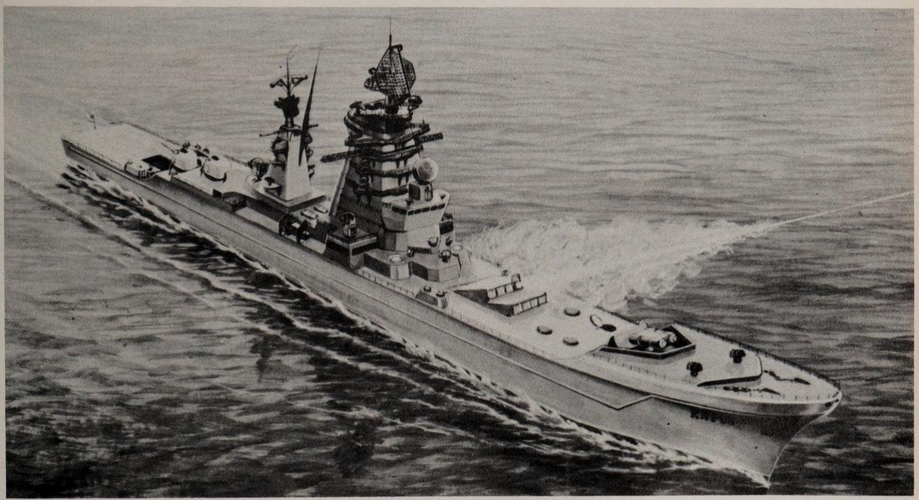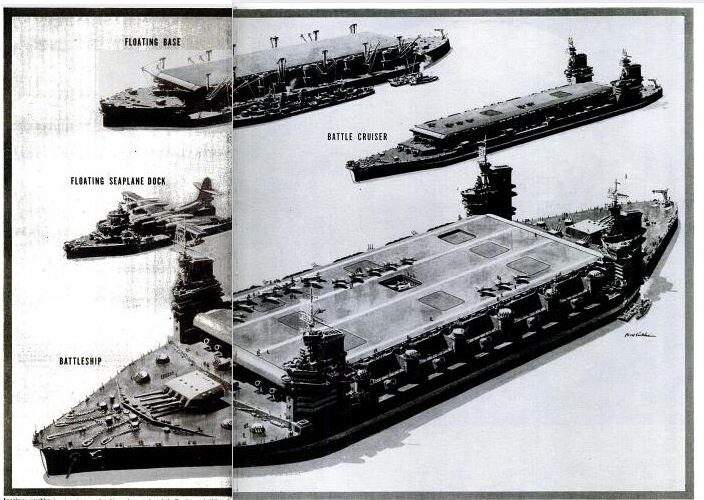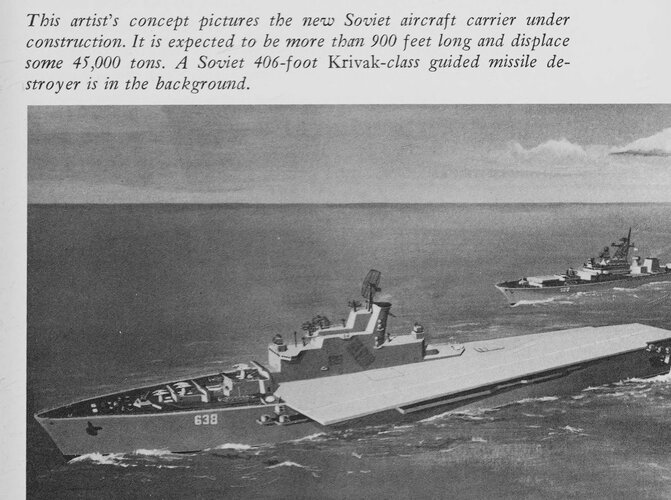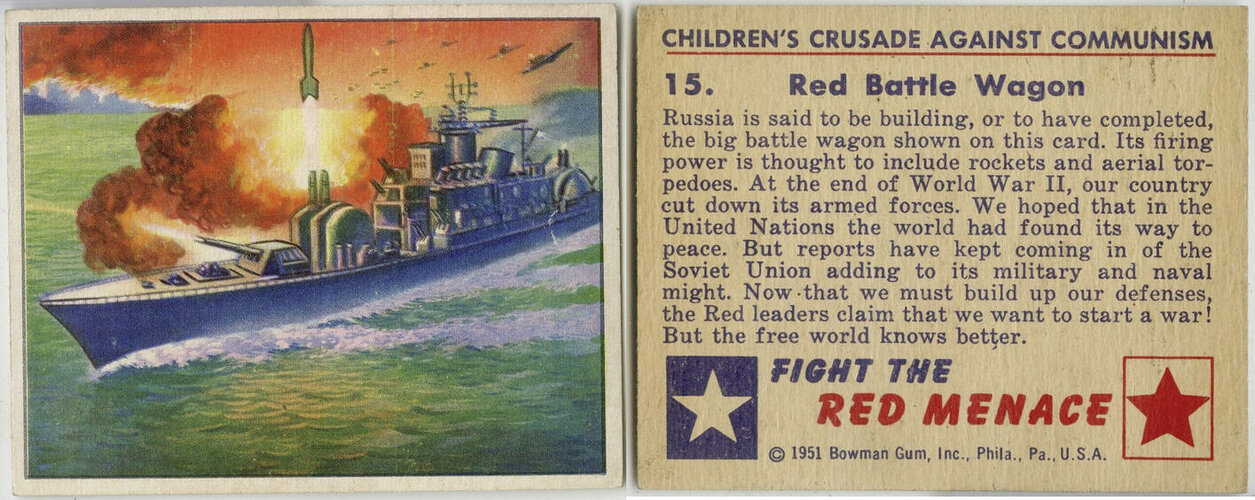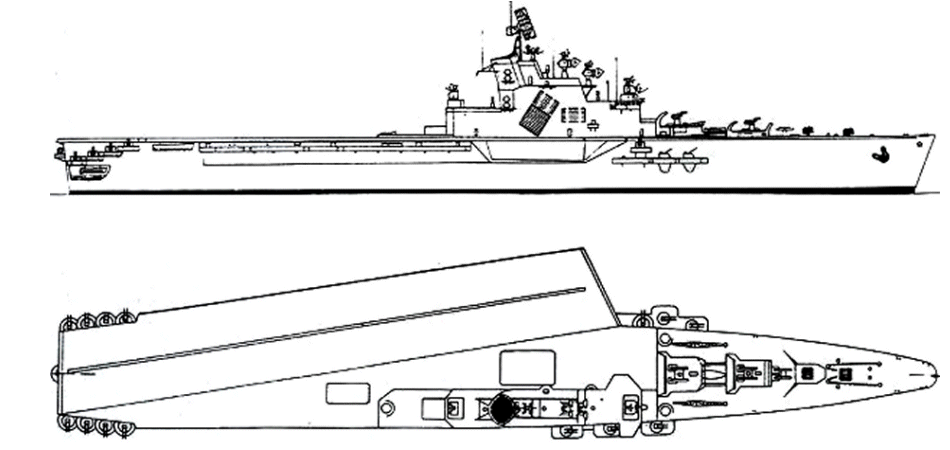Bowman Gum Company (fl. 1951) Fight the Red Menace: The Children's Crusade against Communism trading cards
The Red Menace collection, Children's Crusade Against Communism consists of 53 cards. There were originally 48 cards printed by the Philadelphia-based Bowman Gum Company in 1951. There are duplicates of #5. Hill 303 (GLC09267.05), #6. Landing at Inchon (GLC09627.06), #11. Fleeing the Reds (GLC09627.11), #16. Negro GIs Hold Line (GLC09627.16), #17. War in Malaya (GLC09627.17), #39. Soviet Rocket Fighter (GLC09627.39). Card #23, Ghost City was later acquired and cataloged as GLC09706.
The cards were regarded as "ideological bubblegum," in an article by the Sydney Morning Herald on May 18, 1951. They were released by the company at the height of the Cold War to instruct children on the difference between an American way of life and what was believed to be the Communist way of life. The cartoons depictions are bright and graphic often of conflict, military figures, consequences of atomic warfare and slave labor. Language, heavy in propaganda, is simple and straightforward so that children can comprehend the horrors of a Communist government invading easily. Combined together the items explicitly highlight the fear and anxiety that invaded many Americans' minds at the time.
Cards can be distinguished into a handful of categories such as Persons of Interest, Events, Allies, Atomic Warfare, Characteristics of Communism, Supporters of Communism.
One example is #35. Visit by Red Police (GLC09627.35) illustrating a frightened looking family as police search their home. The text alludes to a danger for the family if they are listening to a radio program, "Voice of America." It reads: "The Red leaders do not want the Russian people to learn what real freedom is like. They might ask for it for themselves." Another example is #47. War Maker, which illustrates a malicious green-colored Mao Tse-tung face accompanied with a red monster wielding a sword. The language is hostile to exemplify the threat that Mao poses against American democracy, "The free world must find a way to keep war-makers like Mao Tse-tung from shedding the blood of innocent people."
Background Information
Child welfare workers and psychologist protested that the cards used tactics of fear as a mode of instructing children about communism rather than using more positive elements of American democracy. The Communist party also protested but this gave the cards more credibility.

